It’s no secret that THCa is gaining popularity in the world of weed, with prominent companies like Hyperwolf expanding their operations to include the hemp plant. If you’re wondering ‘how is THCa flower made,’ we’re here to help!
THC and THCa are both cannabinoids present in the cannabis plant. While THCa serves as the precursor to THC, it is becoming increasingly popular among cannabis consumers seeking wellness benefits without the legal constraints associated with THC.
In this guide, we’ll explore the nuances of THCa flower – how it differs from THC, the extraction process, and why it’s becoming sought-after. We’ll also take a deep dive into the potential health benefits of consuming THCa flower and how to incorporate it into your daily life.
So, how is THCa flower made? Keep reading to find out!
Understanding Cannabis Chemistry: Cannabinoids and Terpenes
At the heart of cannabis chemistry lies a complex interplay between cannabinoids and terpenes. If you’re unfamiliar, cannabinoids are chemical compounds responsible for the myriad of effects that cannabis can induce.
Among these, THCa and THC are two closely related compounds. THCa, or tetrahydrocannabinolic acid, is the non-psychoactive precursor to THC, or tetrahydrocannabinol.
The transformation from THCa to THC takes place through a process called decarboxylation. This occurs when the marijuana flower is exposed to heat or sunlight.
Decarboxylation releases carbon dioxide, converting THCa’s non-intoxicating form into the psychoactive THC that is typically associated with cannabis “high.”
From a therapeutic standpoint, consumers are quickly becoming increasingly interested in the potential effects of THCa in hemp flower, which exists naturally in the raw cannabis flower. Additionally, these same consumers are gaining interest in its interaction with terpenes, which are aromatic compounds that also influence the plant’s effects.
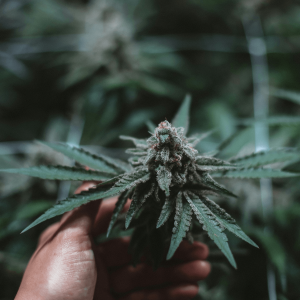
The Stages of Cannabis Plant Growth
In order to answer the question, How is THCa flower made?, it’s essential to understand the stages of cannabis growth.
After all, an understanding the development of THCa is key when exploring the life cycle of the cannabis plant.
Here’s a quick rundown of each stage:
Stage 1: Seed Germination
This initial phase marks the beginnings of the cannabis plant’s life cycle. Cannabis seeds require the right temperature and moisture to sprout, usually within a week.
After germination, a small root will burrow into the growing medium and a shoot will seek out light.
Stage 3: Vegetative Growth
Following germination, the cannabis plant enters the vegetative stage where it develops its iconic leaf shape and structure. During this period, it requires ample light, nutrients, and water to accumulate mass and size.
The vegetative phase is crucial for establishing a strong foundation for the forthcoming THCa flowers.
Stage 4: Flowering Phase
Triggered by changes in the light cycle, cannabis plants then enter the flowering stage, which is when THCa production begins to intensify.
During this stage, the plant’s energy is focused on producing buds. It’s also the phase where monitoring for the ideal balance of cannabinoids can dictate the optimal harvest time.
Stage 5: Harvesting
The final stage is harvesting when the cannabis plant is harvested for its buds, which hold valuable cannabinoids such as THCa.
The timing of the harvest can affect the levels of various cannabinoids, with an earlier harvest preserving higher concentrations of THCa before it converts to THC.
After harvesting, the buds are dried, cured, and then ready for consumption or further processing.
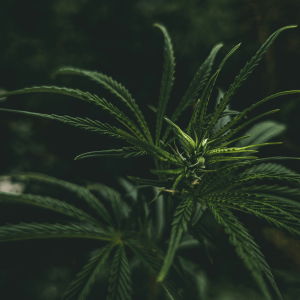
Cultivation Techniques for High THCa Production
The pursuit of high THCa levels in cannabis plants has led growers to refine their cultivation techniques to optimize THCa flower production.
Selecting the right strain and growing conditions are crucial for producing a high THCa yield. Let’s take a look at a few components that contribute to maximizing THCa content in the following sections.
Strain Selection for High THCa
When it comes to achieving high THCa production, the genetics of the cannabis plant are key. With that being said, strains specifically bred for high THCa content are essential.
Breeders have developed varieties that naturally produce higher levels of THCa, enabling cultivators to begin with genetics that predisposes the plant to its desired cannabinoid profile.
Growing Conditions That Affect Cannabinoid Levels
Cannabinoid synthesis can be influenced by numerous growing conditions, including light, temperature, and soil pH.
Ensuring the right amount of light exposure, particularly UV-B light, may help you to better grow THCa flower. Temperature control is also critical, as too much heat can degrade cannabinoids, while cooler temperatures can slow plant growth.
And finally, a well-balanced soil pH helps the plant to absorb the necessary nutrients pivotal for cannabinoid development.
Organic Versus Non-Organic Cultivation Methods
The debate between organic and non-organic cultivation methods is forever ongoing in the cannabis community.
Organic cultivation involves using natural soil amendments and avoiding synthetic pesticides and fertilizers, which can result in a more natural flavor profile and potentially safer consumption. It’s debated whether organic methods impact cannabinoid levels, but many growers claim that these practices lead to a higher-quality end product.
Non-organic methods, however, often allow for more controlled nutrient management and sometimes higher yields, but at the potential cost of introducing undesirable chemicals into the plant and its surroundings.
By meticulously selecting seeds, optimizing growing conditions, and choosing cultivation methods aligned with the desired outcome, growers can influence the THCa levels in their cannabis plants.
With the THCa market growing rapidly, understanding these crucial cultivation strategies becomes more valuable for both producers and consumers.
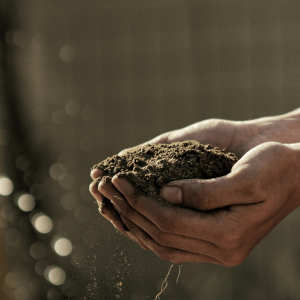
Harvesting and Its Impact on THCa Levels
Knowing when to harvest cannabis is crucial for cultivators aiming to maximize the THCa content of their crop. By understanding the life cycle of cannabis plants, growers can time their harvests to align with peak THCa levels.
Timing the Harvest for Peak THCa Content
Cannabis plants show their readiness for harvest predominantly through the maturity of trichomes, which are the resinous glands where cannabinoids are concentrated.
Using magnification, growers can examine trichome color and clarity to determine the perfect moment to snip their buds. Ideally, a majority of trichomes should shift from clear to a milky white hue, indicating maximum cannabinoid production with high THCa levels.
Techniques for Harvesting Cannabis
When harvesting, growers must delicately handle the buds to avoid trichome damage. Using sharp, sterilized scissors or shears, the branches are carefully trimmed and buds removed.
Some growers harvest the plant whole to reduce trichome agitation, while others may trim the plant selectively.
Post-Harvest Handling to Preserve THCa
Immediately after harvesting, the process of drying and curing takes place. This phase is essential for reducing the decarboxylation process that converts THCa to THC.
The drying process should be slow and controlled, with temperatures kept low and humidity levels monitored, to preserve the delicate terpenes and cannabinoids.
Once dried, a proper curing process—involving sealing buds in airtight containers with Boveda humidity control packs—helps maintain cannabinoid levels, prevent mold, and enhance the overall quality of the final product.
By playing with the timing of harvest and using careful techniques for handling the cannabis after harvest, growers can have a big impact on the potency of THCa in their product. This allows them to cater to a market that appreciates the unique qualities of this particular cannabinoid.
Extraction and Refinement Processes
The transition from raw cannabis to a product rich in THCa involves sophisticated extraction and refinement processes. Each method has its pros and cons, influencing purity, potency, and safety.
Here’s a closer look at how these elements come into play:
Different Extraction Methods
- Solvent-Based Extraction: Often utilizing butane or CO2, this method dissolves the trichomes away from the plant material to later be collected.
- Solventless Techniques: Methods such as ice water extraction and manual separation, like rosin pressing, avoid chemical solvents, which can be appealing for health and environmental reasons.
- Distillation: This method further refines cannabinoid extracts, isolating THCa and increasing potency through heat and vacuum filtration.
Turning Raw Cannabis into THCa Flower
- Flash-Freezing: This process preserves trichomes and cannabinoids immediately after harvest, providing a snapshot of the plant’s THCa content.
- Cryogenic Freezing: Freezing at extremely low temperatures can be used to separate trichomes from the plant for the production of live resin, a process that retains a high level of cannabinoids, including THCa.
Laboratory Testing and Quality Assurance
When it comes to cannabis production, third-party lab testing is crucial for ensuring quality and safety. These independent labs play a vital role in verifying that cannabis products, including those with high THCa, meet strict legal and health standards.
By analyzing cannabinoid profiles, screening for contaminants like pesticides, heavy metals, and molds, and ensuring accurate labeling, these tests help ensure the purity and potency of the product.
Understanding lab test results is important for both producers and consumers, as it allows for informed decisions based on comprehensive data.
A certificate of analysis (COA) provided by these labs often accompanies the final product, providing a transparent overview of its contents and building trust in the cannabis products.
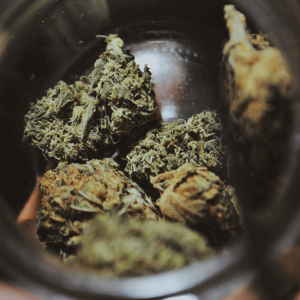
Choosing the Right THCa Flower
Selecting high-quality THCa flower requires an understanding of the product and an ability to read and interpret labels and lab reports.
As a consumer, knowing the qualities that contribute to an awesome THCa flower can really enhance your experience.
What to Look for in a THCa Flower Product
When you’re on the lookout for THCa flower, consider the appearance, aroma, and structure of the buds. Quality hemp flowers usually exhibit vibrant colors and a coating of trichomes that give them a sticky, crystalline look.
The aroma should be pungent and pleasant, indicating well-preserved terpenes, which not only contribute to the scent but also vary the effects of cannabinoids like THCa.
Reading Labels and Lab Reports
Understanding product labels and lab reports, or Certificates of Analysis (COAs), is essential when choosing a THCa flower. Labels should provide information about the strain type, cannabinoid content, including THCa percentages, and terpene profile.
Lab reports go deeper by verifying the presence of contaminants, ensuring that the product is safe for consumption. Always look for evidence of third-party testing to ensure unbiased and accurate results.
Differentiating between THCa Flower and Other Products
THCa flower is distinctive from other cannabis products like CBD flower or THC-rich varieties. While they may look similar, the difference lies in their cannabinoid concentration.
THCa flower is specifically cultivated and harvested to retain high levels of THCa, which doesn’t produce psychoactive effects until it is decarboxylated into THC.
Conclusion
In conclusion, THCa flower is intriguing in the context of cannabis cultivation and consumption. It provides a potent experience without psychoactive effects until it undergoes decarboxylation.
The key lies in specialized growing and processing techniques that preserve high levels of THCa, making it a sought-after product valued for its potential therapeutic benefits and unique user experience.
Whether you’re a seasoned consumer or new to the world of weed, exploring the world of THCa flower will deepen your understanding and appreciation of this incredible plant.
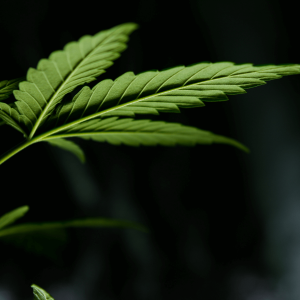
Frequently Asked Questions
1. How is THCa derived?
THCa, or Tetrahydrocannabinolic acid, is a naturally occurring compound found in the raw cannabis plant.
It is derived through careful cultivation and controlled processing techniques, such as slow drying and proper curing of cannabis buds, which preserve the THCa content.
2. Is THCa sprayed on hemp?
No, THCa is not typically sprayed on hemp.
Hemp plants have their own cannabinoid profile, and while they are genetically related to cannabis, they usually contain higher levels of CBD and lower levels of THC, including THCa.
The high THCa content is a characteristic of certain cannabis strains, which are grown specifically for their cannabinoid content.
3. What is a THCa flower?
A THCa flower refers to the raw, unprocessed buds of a cannabis plant that are rich in Tetrahydrocannabinolic acid (THCa).
Unlike THC, THCa is non-psychoactive until it undergoes decarboxylation, a process involving heat that converts THCa into THC, the psychoactive compound known for its “high.”
4. What percentage of THCa is in flower?
The percentage of THCa in cannabis flower can vary widely depending on the strain and cultivation methods. Generally, high-THCa cannabis flowers may contain anywhere from 10% to 30% THCa.
It’s important to look at the lab reports or Certificates of Analysis (COAs) for accurate percentages, as these will provide detailed information about the cannabinoid content of the product you are considering.
5. How is THCa flower made?
THCa flower is cultivated and harvested precisely to maximize THCa levels and minimize its conversion to THC. It begins by selecting genetics that naturally produce high THCa concentrations.
At peak cannabinoid content, the plant is harvested and undergoes a slow drying and curing process to prevent THCa degradation. Buds are hand-trimmed to preserve delicate trichomes containing cannabinoids and terpenes.
Once dried and cured to the ideal moisture content, the product is stored optimally to maintain THCa-rich flowers until sale or consumption.
This meticulous process ensures a premium THCa flower that is potent and delivers its intended effects and benefits.
6. Is THCa flower safe?
Absolutely, when properly cultivated and tested, THCa flower is considered safe.
It undergoes rigorous laboratory testing to ensure it is free from harmful contaminants such as pesticides, heavy metals, and mold.
7. Is THCa flower legal?
Yes! While recreational weed is only legal in some states, certain hemp-derived cannabinoids (like THCa) are legal under the 2018 Farm Bill. It’s essentially a loop-hole!

 Rewards
Rewards




